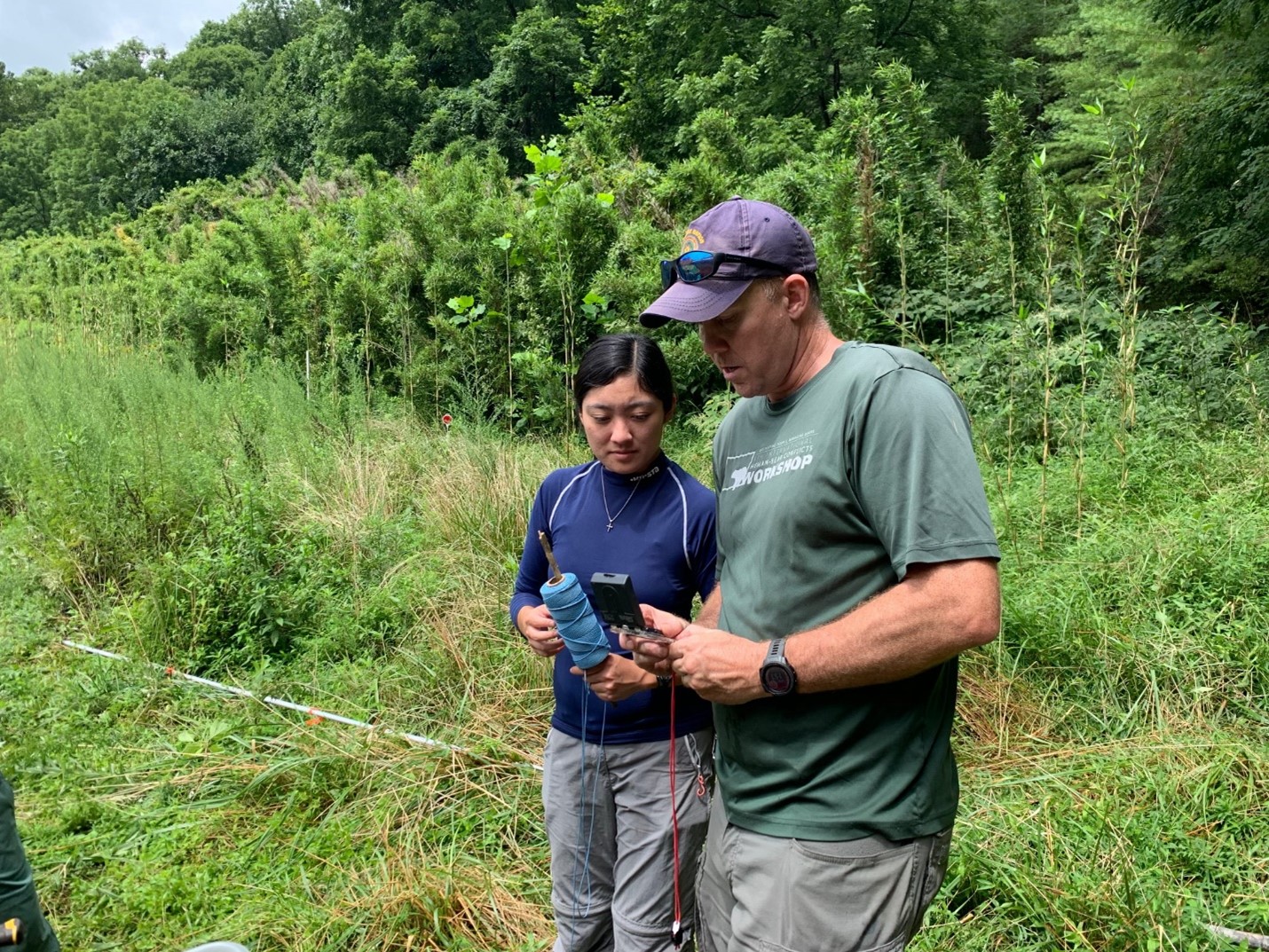Rivercane fellow follows-up fellowship

Last summer, a team of fellows kickstarted partnerships and progress toward building a new rivercane indicator for the Southeast Blueprint. If you have not read about that yet, learn more by reading our previous blog from last August.
Our fellowship team was able to solidify SECAS networks with Tribal Nations partners to ensure that this indicator is a coproduced project that upholds mutual benefits for data sovereignty, capacity, and relationships. But to carry this forward is easier said than done.
What exactly does coproduction look like? As one of the rivercane fellows, I’m a PhD Candidate working to answer this question in my dissertation research. In addition to the rivercane indicator, I have been working on a rivercane experiment with Dr. Caleb Hickman of the Eastern Band of Cherokee Indians (EBCI). The experiment explores how different forms of management and environmental conditions can impact the growth of rivercane. We coproduced a design that incorporates both Western and Indigenous practices of rivercane management, comparing treatment groups that are informed by these different knowledge bases. One of the treatment groups centers on traditional Cherokee harvesting methods, in which Cherokee artisans from the EBCI carry out their own cultural harvest within the experimental areas.
A key point in this project is that the artisanal values were the standard against which to measure the rivercane growth. Presence is not enough; in this context, size does matter. Bringing this idea to life took more than just a lot of planning; my partners and I needed to rely on building relationships and trust, as well as outlining clear guidelines for maintaining sensitivity to cultural information. Not to mention material compensation, in the form of both finances and rivercane! In this way, needs were met on both sides, and everyone involved had consented to their contribution. A long-term goal of the project is for this experiment to be passed on to the EBCI for them to take charge of monitoring and managing the rivercane.
The biggest lesson is that the planning and relationship building does not end after the project breaks ground. Coproduction is an iterative and malleable process, and often takes longer than anticipated. It’s important to recognize the different values being brought to the table in order to identify the right goals and prioritize a direction. The process for building a rivercane indicator is different from previous Southeast Blueprint indicators, because working with culturally sensitive data means recognizing the values that come from tribal sovereignty and re-forming relationships that have been informed by a colonial history. These are long, arduous steps that cannot be skipped over if equitable partnership is a priority of the project.
This summer, I will continue my work toward building a rivercane indicator by starting with a focused suitability model. Cultural information will be incorporated into this model, which presents another example of protecting data sovereignty. With the support of the U.S. Fish and Wildlife Service and Tribal partners, budgeting time and resources while promoting Tribal agency will be key to the success of the project. Stay tuned!